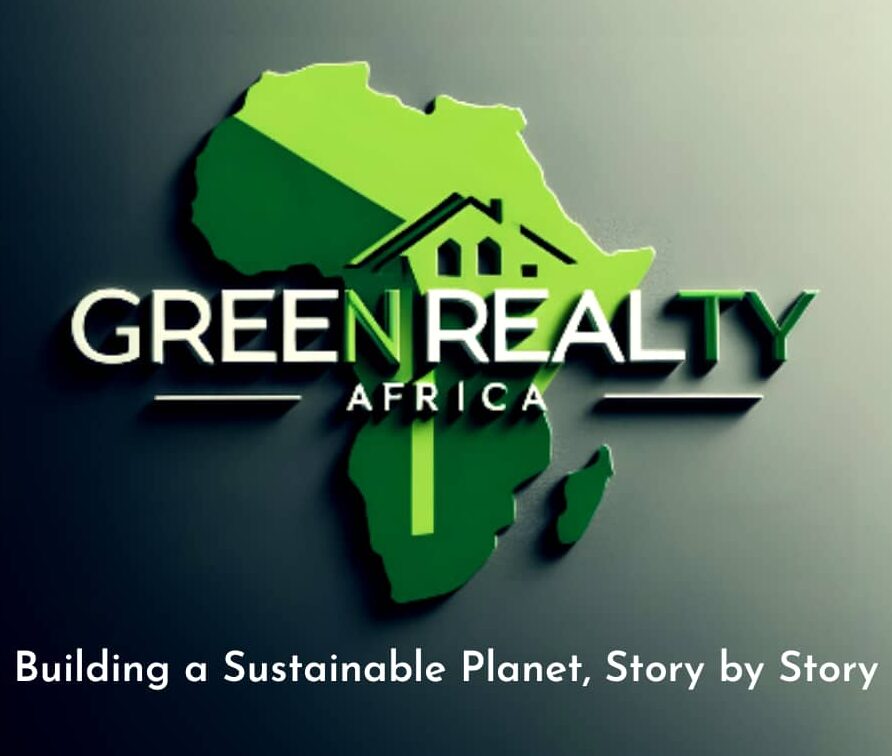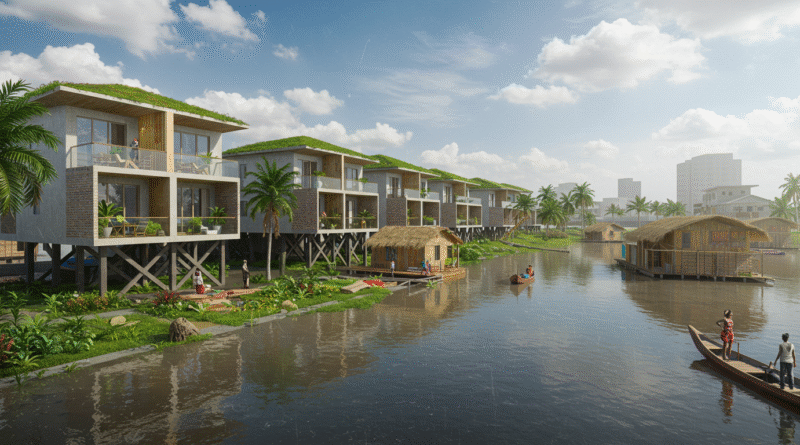Lagos Flood-Resilient Real Estate: Green Architecture
Lagos Flood-Resilient Real Estate: Green Architecture for Climate Adaptation is more than just a headline—it’s becoming the new reality for Africa’s largest city.
Lagos, a sprawling coastal metropolis of over 20 million people, is on the frontlines of climate change, grappling with rising sea levels, torrential downpours, and overwhelmed drainage systems. As flooding becomes more frequent and destructive during the rainy season, forward-thinking architects, developers, and planners are pioneering green real estate solutions that blend climate resilience with community needs.
Why Flood-Resilient Design Matters in Lagos Real Estate
To begin with, when homes and commercial properties flood, the economic consequences ripple across the entire real estate market. Property values decline, insurance premiums surge, and investor confidence weakens. In a city widely seen as Nigeria’s real estate capital—and by extension, Africa’s—integrating flood-resilient design has become essential. It is the key to protecting assets and securing sustainable growth.
6 Green Strategies Powering Lagos Flood-Resilient Real Estate
Elevated Structures & Stilt Housing
Firstly, inspired by traditional waterfront living, new constructions now feature stilt-supported platforms that elevate homes above expected flood levels. A standout example is the Makoko Floating School by NLÉ Architects, which illustrates how buoyant architecture can serve entire communities.
Amphibious & Floating Architecture
Additionally, amphibious buildings adapt to changing water levels by rising and falling with the tide. These structures ensure functionality even in heavy floods—making them ideal for future-focused real estate in coastal zones like Lagos.
Permeable & Green Infrastructure
Moreover, innovations like rain gardens, green roofs, and permeable paving reduce stormwater runoff. These eco-friendly features ease pressure on Lagos’ drainage systems and enhance the value of luxury and public developments alike.
Raised Foundations & Flood Walls
Furthermore, many developments now include elevated slabs, discreet flood walls, and diversion trenches. These elements protect homes while maintaining curb appeal and neighborhood integration.
Decentralized Drainage & Constructed Wetlands
In addition, bio-swales, cisterns, and small-scale wetlands help manage stormwater on-site. Decentralized drainage reduces infrastructure strain and boosts buyer confidence—especially among sustainability-conscious clients.
Climate-Aware Zoning & Urban Planning
Finally, stronger zoning policies that discourage building on natural floodplains can steer growth to safer zones. While enforcement remains a hurdle, clear land-use plans help shape the future of Lagos flood-resilient real estate.
Overcoming Barriers to Green Development
Still, there are key challenges to implementing these solutions.
Informal Settlements
To start, retrofitting unplanned areas requires community-driven strategies and microfinance programs that promote equity and inclusion.
Infrastructure Decay
In response, public-private partnerships can restore damaged systems and co-finance stormwater upgrades across the city.
Policy Gaps
Moreover, stronger building codes and fast-tracked permits for resilient designs will drive broader adoption.
Economic Constraints
Finally, tax incentives and financing for green-certified buildings can ease financial burdens for both developers and buyers.
The Future of Lagos Flood-Resilient Real Estate
Ultimately, flood-resistant architecture is no longer just about survival—it’s a competitive advantage. Properties built to withstand Lagos’ extreme weather will enjoy better valuations, easier insurance access, and rising demand from eco-conscious investors.
As Lagos moves from crisis to climate innovation, one message is clear: the healthiest property markets will be those that act today. In a city defined by its waterways, Lagos flood-resilient real estate proves that smart development isn’t just built for land—it’s built for water, too.

